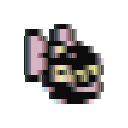Field
A paradigm shift in how users interact with AI systems, moving beyond linear command-response patterns to enable rich, compositional workflows. As the lead product designer, I developed a novel interaction paradigm centered on stacks, compositions combining media elements with natural language to express complex creative intents.
I designed a dynamic visual system where aesthetic presentation and underlying data structure remain synchronized, ensuring compositions are both beautiful and machine-readable through the Stack Visual Engine. The cascade interface introduces an innovative card-based system for managing multiple AI processes simultaneously, allowing users to pause, refine, and redirect autonomous workflows in real-time. This creates a new form of visual programming that feels totally intuitive to users while enabling unprecedentedly sophisticated AI collaboration.
The interface draws from social media's familiar patterns (timelines, reference, context) while introducing entirely new interaction models for AI collaboration. The design language prioritizes clarity of intent expression, with every visual element serving both aesthetic and functional purposes. Field transforms users from passive consumers of AI outputs into active creative directors, orchestrating agentic behavior while maintaining human agency in the creative process. The platform scales from personal projects to complex collaborative productions, demonstrating versatility across use cases.
Submitted as the thesis by practice for my graduate research at the Royal College of Art, Field by Moon is presented as a studio magazine documenting the project as of Summer 2024, containing UI work, system architecture, wireframes, user stories, and expansions on the design theory animating this epochal software project.

